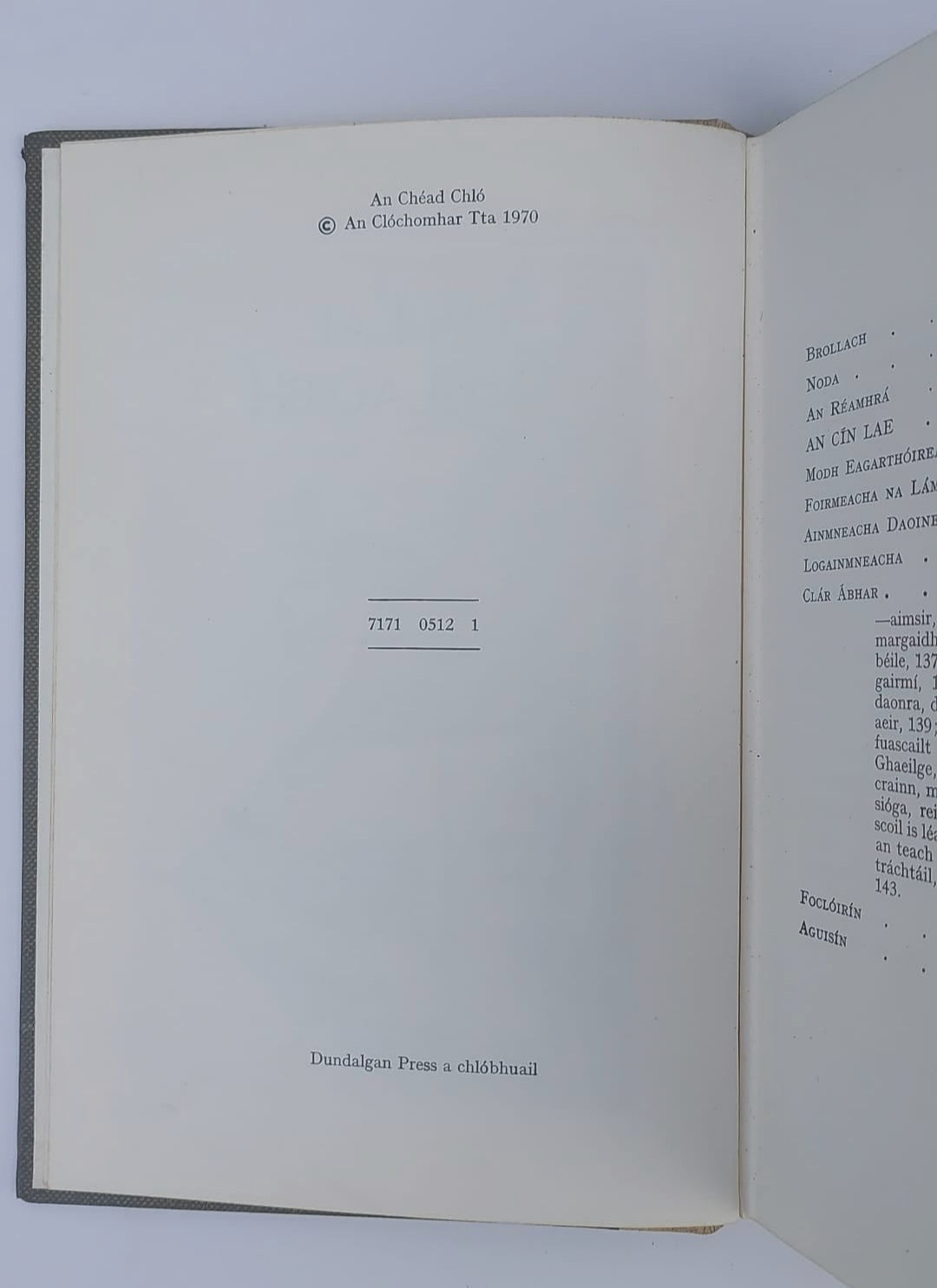
Cín Lae Amhlaoibh - Tomás de Bhaldraithe
Published by Dublin Institute for Advanced Studies (DIAS)
Hardcover | Irish Language | Excellent Condition | Rare Author Signature
A Collector’s Edition of a Gaelic Classic
This is a true first edition of Cín Lae Amhlaoibh, published in 1970 by the Dublin Institute for Advanced Studies as part of its dedication to preserving foundational Irish-language texts. This particular copy is signed by the editor, the renowned lexicographer and linguist Tomás de Bhaldraithe, making it exceptionally rare and highly desirable to collectors of Irish books.
The book is in excellent condition: a clean, square hardcover with tight binding, bright pages, and no internal markings other than the authorial signature on the front free endpaper. The boards are fresh, with only minimal signs of age, and the spine remains unfaded. The text is entirely in Irish, set in a clear, readable font typical of DIAS’s high-quality academic productions.
This signed first edition represents a scarce convergence of literary, linguistic, and collector interest — ideal for serious students of the Irish language, collectors of first editions, or anyone building a library of essential Gaelic works.
About the Work: A Window into 19th-Century Gaelic Ireland
Cín Lae Amhlaoibh is the diary of Amhlaoibh Ó Súilleabháin, a teacher, tradesman, and keen observer of Irish rural life in the early 19th century. Written between 1827 and 1835 in his native Irish, the diary records the everyday happenings, cultural traditions, and social observations of a small-town life in Callan, Co. Kilkenny — one of the most valuable firsthand accounts of life in pre-Famine Ireland.
The 1970 edition, edited and annotated by Tomás de Bhaldraithe, marked a scholarly milestone in making this Irish-language classic accessible to modern readers. De Bhaldraithe, best known as the editor of the influential English-Irish Dictionary (1959), brought both linguistic precision and cultural sensitivity to this edition, providing annotations that illuminate not just the text but also the world it depicts.
In these pages, readers encounter a vibrant and nuanced picture of early 19th-century Ireland — from local folklore and seasonal customs to reflections on politics, religion, education, and human nature. The diary also captures the richness of Munster Irish in use at the time, offering linguists and language learners alike a valuable record of regional usage.






